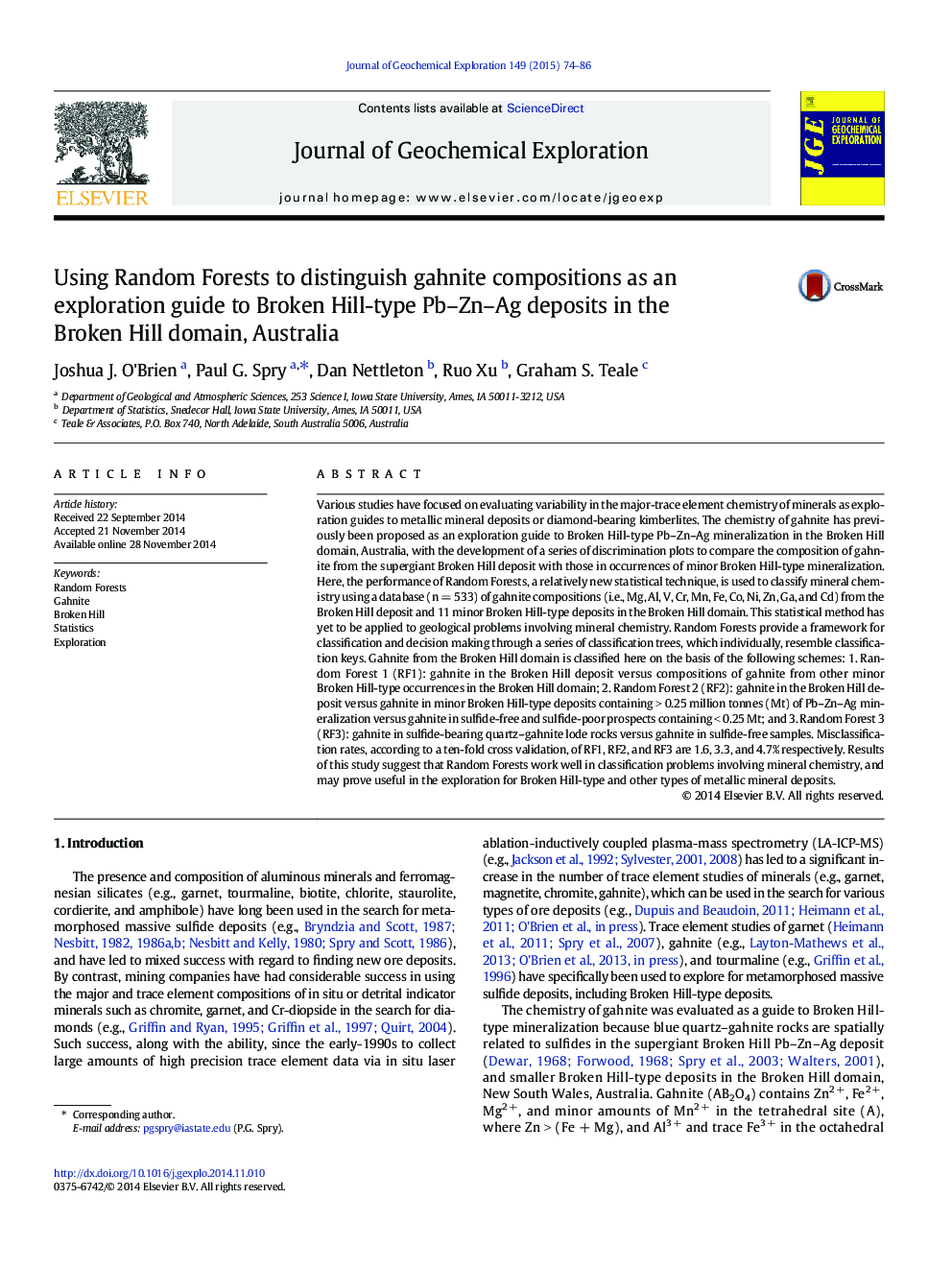| کد مقاله | کد نشریه | سال انتشار | مقاله انگلیسی | نسخه تمام متن |
|---|---|---|---|---|
| 4457193 | 1620910 | 2015 | 13 صفحه PDF | دانلود رایگان |

• First use of Random Forest statistics to mineral chemistry
• Random Forest is a superior statistical technique to linear discrimination analysis.
• Random Forests distinguish gahnite compositions in the Broken Hill domain.
• Gahnite composition is an exploration guide to Broken Hill-type Pb–Zn–Ag deposits.
Various studies have focused on evaluating variability in the major-trace element chemistry of minerals as exploration guides to metallic mineral deposits or diamond-bearing kimberlites. The chemistry of gahnite has previously been proposed as an exploration guide to Broken Hill-type Pb–Zn–Ag mineralization in the Broken Hill domain, Australia, with the development of a series of discrimination plots to compare the composition of gahnite from the supergiant Broken Hill deposit with those in occurrences of minor Broken Hill-type mineralization.Here, the performance of Random Forests, a relatively new statistical technique, is used to classify mineral chemistry using a database (n = 533) of gahnite compositions (i.e., Mg, Al, V, Cr, Mn, Fe, Co, Ni, Zn, Ga, and Cd) from the Broken Hill deposit and 11 minor Broken Hill-type deposits in the Broken Hill domain. This statistical method has yet to be applied to geological problems involving mineral chemistry. Random Forests provide a framework for classification and decision making through a series of classification trees, which individually, resemble classification keys. Gahnite from the Broken Hill domain is classified here on the basis of the following schemes: 1. Random Forest 1 (RF1): gahnite in the Broken Hill deposit versus compositions of gahnite from other minor Broken Hill-type occurrences in the Broken Hill domain; 2. Random Forest 2 (RF2): gahnite in the Broken Hill deposit versus gahnite in minor Broken Hill-type deposits containing > 0.25 million tonnes (Mt) of Pb–Zn–Ag mineralization versus gahnite in sulfide-free and sulfide-poor prospects containing < 0.25 Mt; and 3. Random Forest 3 (RF3): gahnite in sulfide-bearing quartz–gahnite lode rocks versus gahnite in sulfide-free samples. Misclassification rates, according to a ten-fold cross validation, of RF1, RF2, and RF3 are 1.6, 3.3, and 4.7% respectively. Results of this study suggest that Random Forests work well in classification problems involving mineral chemistry, and may prove useful in the exploration for Broken Hill-type and other types of metallic mineral deposits.
Journal: Journal of Geochemical Exploration - Volume 149, February 2015, Pages 74–86